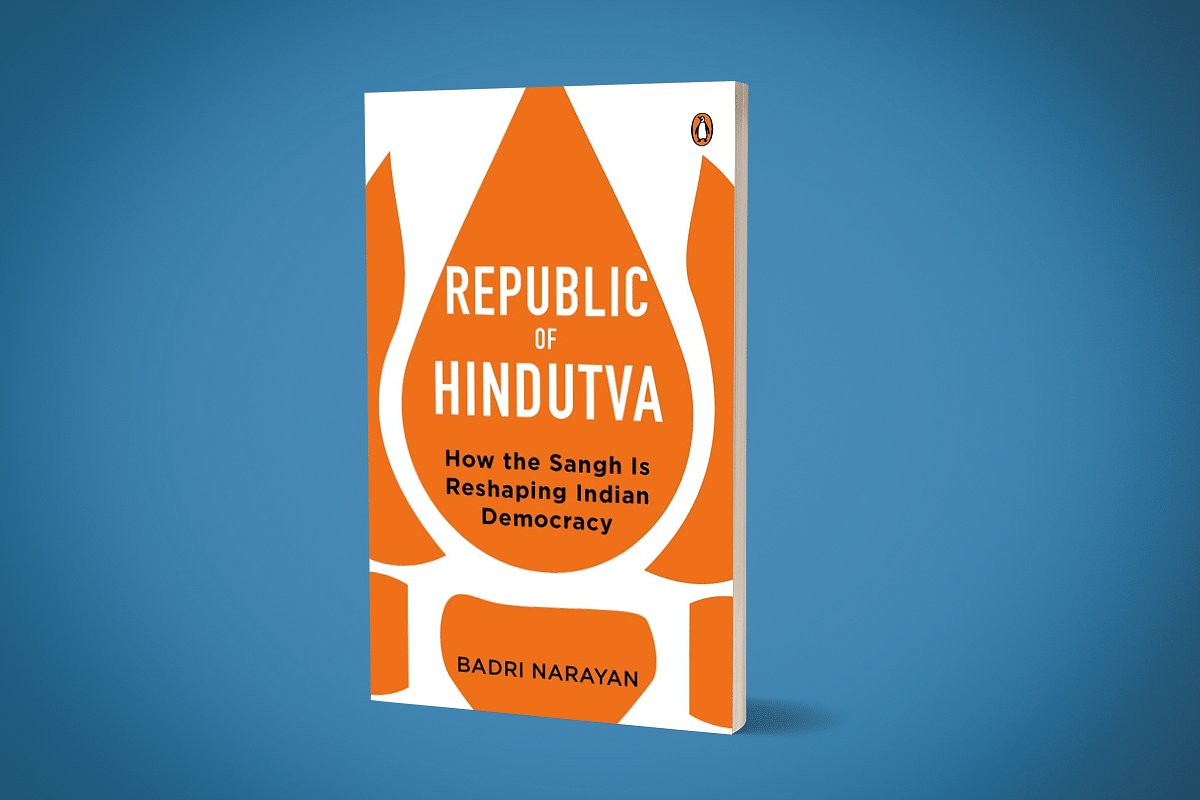Books
Book Review: ‘Republic Of Hindutva’ Offers A Limited But Welcome Understanding Of The Saffronisation Of Indian Politics
- The book does not treat the BJP and the RSS as 'communal organisations' intent on the destruction of 'secularism' but objects of academic subject and understanding while maintaining an accessible language.

The Book cover.
Republic of Hindutva: How the Sangh is reshaping Indian Democracy (March 2021). Badri Narayan. Viking Publishers. 129 pages. Rs 360 (hard cover)
The academic discourse regarding the rise of the BJP since 2014 that spills into public opinion and discourse has almost overwhelmingly been negative, with the rise of the supposedly “fascistic” and “sectarian” Modi destroying the “idea of India” among other things.
In such a situation, the crisp read by Badri Narayan, Republic of Hindutva: How the Sangh is reshaping Indian Democracy is a breath of fresh air.
The book attempts to cover the extensive influence of the RSS, and its influence in the electoral campaigns and narrative creation of the BJP.
The book does not treat the BJP and the RSS as communal organisations intent on the destruction of “secularism” but objects of academic subject and understanding while maintaining an accessible language.
The author’s extensive fieldwork has allowed him to narrate with examples the desire of many Dalit communities of religious and spiritual accommodation through the celebration of deities identified with them, as well as the promotion of many caste-based icons to national ones by the Sangh Parivar.
This aspect of social inclusion through both religious and political iconography has become a crucial source of strength for the BJP. In targeting the socio-religious aspect of aspiration by groups and promoting their inclusion within the mainstream, the Sangh is able to create a more cohesive base.
The author deftly weaves a coherent picture of how the desires of non-dominant OBC and Dalit groups were accommodated and encouraged by the BJP in creating a new broader base in Uttar Pradesh and Bihar.
The book also illustrates at multiple points the inherent contradictions of the Sangh and the organisation's individual, independent interests, while attempting to synthesise a common plank.
The internal pressures of accommodating Dr. B.R. Ambedkar as an icon and the passage of the SC/ST Atrocities Amendment Act while attempting to cultivate its relationship with upper castes and the external pressures by the activity of fringe Hindutva groups are detailed well.
The analysis of the motivations and strategies of political actors in Uttar Pradesh in the 2019 Lok Sabha Elections and the RSS’ and Modi’s emphasis on social politics after the results, is a fascinating insight.
The book also has an epilogue on the impact of Covid-19 on inter-caste social relations. Though the research is not complete and is limited, the epilogue does expose the reader to critically think on the impact of the pandemic on social relations, which could in large part determine the future.
The book, however, does suffer from some shortcomings. It is overtly focussed on Uttar Pradesh and Bihar, with only cursory references to other regions and states.
This is understandable, considering the author’s field experience is primarily in these states. However, the vision and mission of RSS detailed in the book is felt throughout the country.
The reshaping of Indian Democracy by the Sangh is not just limited to Uttar Pradesh and Bihar. In this respect, the book falls short.
The book also seems disjointed at times with similar information being regurgitated automatically rather than restated for the reader’s benefit. The author also does discount the communal violence praxis of BJP’s votes, with the impact of the 2013 Muzaffarpur riots in Hindu consolidation in Western Uttar Pradesh not included.
The book does, however, note the heightened state of communal awareness and the consequences, such as low-intensity continuing conflicts.
The book’s overt focus on socio-politics in the Gangetic plains means that enough focus has not been attributed to the welfare and empowerment focus of the Central government from 2014.
The success of the BJP and the RSS lies not only in the accommodation of marginalised and disenfranchised communities, but also the generalised appeal of successful welfare schemes that have reached all.
The success of the BJP-RSS lies not only in creating a social coalition, but also in its broad appeal to the average Indian. While the former is analysed from its success in UP and Bihar, the latter, which is equally important, has only been mentioned and not fully analysed.
Nonetheless, the book remains an important read for those trying to decode the electoral success of the BJP since 2014. The ability of the RSS to function as a support base for the BJP cadre and campaigning as well as a route of independent feedback remains in many ways, the BJP’s most potent tool of success, possibly only surpassed by the Prime Minister’s popularity.
The accounts of the RSS addressing the religious and spiritual concerns of Dalits and other deprived communities while the BJP also addressing political and social concerns is salient.
The author’s accessible language and his commitment to a mostly objective analysis of the Sangh’s activities is most welcome.
Introducing ElectionsHQ + 50 Ground Reports Project
The 2024 elections might seem easy to guess, but there are some important questions that shouldn't be missed.
Do freebies still sway voters? Do people prioritise infrastructure when voting? How will Punjab vote?
The answers to these questions provide great insights into where we, as a country, are headed in the years to come.
Swarajya is starting a project with an aim to do 50 solid ground stories and a smart commentary service on WhatsApp, a one-of-a-kind. We'd love your support during this election season.
Click below to contribute.
Latest